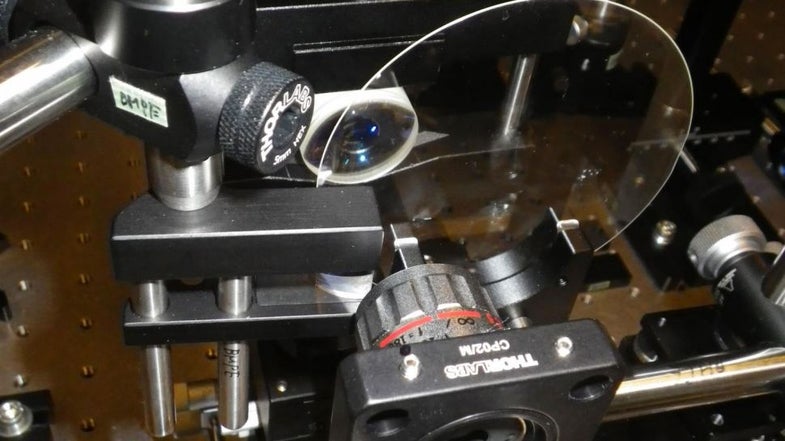This High Speed Experimental Camera Can Make a Trillion Images Per Second
A Japanese researcher has created a camera that goes up to ludicrous speed


You’re probably familiar with the awesome Phantom cameras that shoot a lot of the amazing slow-motion scenes you see in movies. Their flagship camera can capture up to a million frames per second at a very small resolution. Now, a Japanese researcher named Keiichi Nakagawa has created a camera (of sorts) that can record up to a trillion frames per second.
The camera uses something called Sequentially Timed All-Optical Mapping Photography (STAMP) and is used for capturing atoms doing whatever it is atoms do in a laboratory setting.
You can read more about the camera over at Tech Radar. And while this kind of photography doesn’t really have a practical use for us as shooters, it is a cool reminder about how quickly technology is evolving and solving problems.
Just think about that number for a minute: One trillion fps. Theoretically, if you had a camera that could shoot regular photos at that speed and you played it back like a typical 30 fps video, it would take more than a thousand years to watch the footage captured in a single second. For even more perspective, here’s a video of me (from PopSci) hitting a hard boiled egg with a tennis racket at 4,000 fps. Shot at a trillion fps, it would be moving 250 million times slower.
You’re probably familiar with the awesome Phantom cameras that shoot a lot of the amazing slow-motion scenes you see in movies. Their flagship camera can capture up to a million frames per second at a very small resolution. Now, a Japanese researcher named Keiichi Nakagawa has created a camera (of sorts) that can record up to a trillion frames per second.
The camera uses something called Sequentially Timed All-Optical Mapping Photography (STAMP) and is used for capturing atoms doing whatever it is atoms do in a laboratory setting.
You can read more about the camera over at Tech Radar. And while this kind of photography doesn’t really have a practical use for us as shooters, it is a cool reminder about how quickly technology is evolving and solving problems.
Just think about that number for a minute: One trillion fps. Theoretically, if you had a camera that could shoot regular photos at that speed and you played it back like a typical 30 fps video, it would take more than a thousand years to watch the footage captured in a single second. For even more perspective, here’s a video of me (from PopSci) hitting a hard boiled egg with a tennis racket at 4,000 fps. Shot at a trillion fps, it would be moving 250 million times slower.